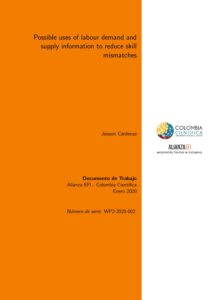Unemployment and informality are widespread phenomena in the Colombian economy that affect people with different profiles. This working paper discusses how the vacancy database can be used to build a detection system of skill shortages. Also, it elaborates on, for the first time in Colombia, a set of macro indicators within the vacancy database’s labour demand and supply information for the identification of possible skill shortages. Finally, it illustrates how detailed information from vacancies (job descriptions) can be used to update occupational classifications (ISCO) and the labour force skills according to employers’ requirements. The results suggest low-skilled occupations tend to show more signs of oversupply: a considerably higher informality rate compared to other skill groups. On the other hand, the first quarter of the year for each occupation is characterised by higher unemployment rates and lower vacancy rates. The skill mismatch indicators for Colombia demonstrate that 30 occupations are currently in short supply. Therefore, the evidence suggests that formal labour market opportunities exist for people with different profiles in terms of age, education and work experience, amongst others. Based on these results, policymakers and education and training providers can promote and update policy/curriculums quickly, according to the current occupational labour demand structure and specific skills required, and the job seekers can receive relevant information regarding occupation shortages, and in this way, unemployed and informal people can make better and informed decisions about their training and job search.
Autores:
- Jeisson Arley Cárdenas
Palabras clave:
- Beveridge curve
- Informality
- Online job portals
- Skill
- Skill mismatches
- Unemployment
Categorías:
- Proyecto 2
- Documentos de trabajo
